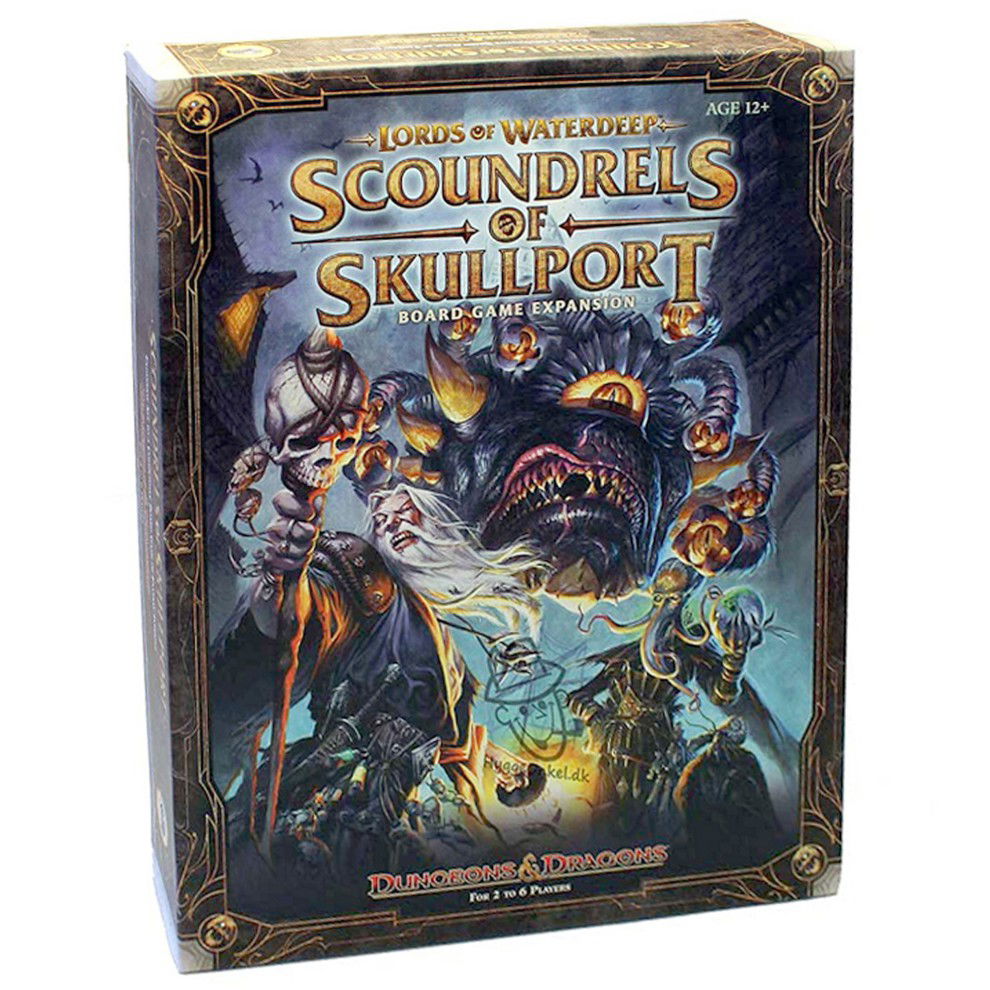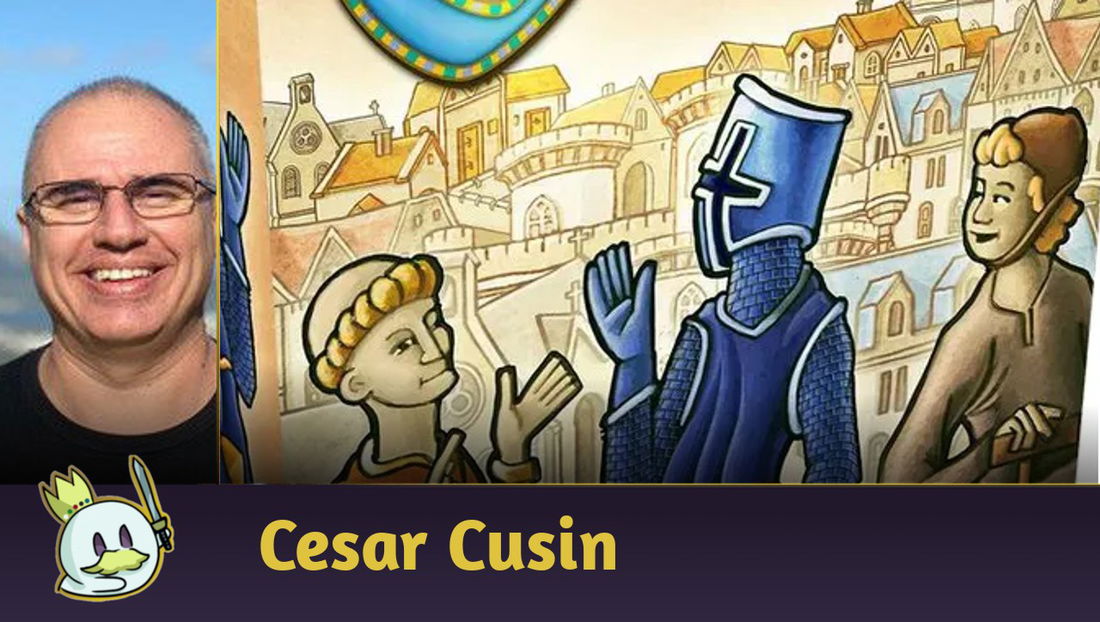About the Expansion
This is my first expansion review, and it was requested by readers. It's great to see you all interacting!
So, let's get started with what is an "expansion". Basically, an expansion generally has 3 characteristics:
- it complements the main game;
- it brings new elements to the game;
- it provides more depth and variety.
When one says that an expansion is a complement to the main game, it means that it brings an additional set of components, new rules, and content that interconnect with the original game. As a rule, the expansion does not work independently; the base game is required to use it.
Another striking feature of expansions is that they bring new gameplay elements, such as new characters, scenarios, cards, boards, missions, mechanics, or game modes that broaden the experience and increase replayability.
Finally, among the objectives of expansions is also to provide more depth and variety to the game, that is, to renew the players' attention by offering unprecedented challenges and new strategies, almost like a "new season" of a favorite series.
In Scoundrels of Skullport, the expansion to Lords of Waterdeep, we can see all 3 characteristics. Also, it's not just one, but two complete expansions: the sprawling dungeon of Undermountain, and the criminal haven of Skullport. The expansion includes new Lords, Buildings, Intrigues, and Quest cards.
One advantage of a Lords of Waterdeep expansion is that you can choose to use one or both expansions from the game. There's also a new organization, the Grey Hands. Now, a sixth player can join the fun!
Let's explore the Scoundrels of Skullport expansion!
Scoundrels of Skullport - Game Info
Scoundrels of Skullport is an expansion to Lords of Waterdeep, 2-to-6 players, age 12+, by designers Chris Dupuis, Peter Lee e Rodney Thompson. The Game Art had a team of over 30 contributors.

Scoundrels of Skullport was released in 2013 by Wizards of the Coast and has not yet been released in Brazil. Its mechanics include: worker placement, collecting sets, contracts, turn order based on actions, hidden roles, property, "take that," and resource management.

Scoundrels of Skullport has been a standout since its release year. In the same year of its release, 2013:
- It won the Golden Geek award for Best Board Game Expansion;
- It won Best Expansion at the Board Game Quest Awards.
Playing the Game
Waterdeep has just opened the doors to more spaces for you (a Lord) and your group of agents in search of fame and wealth. Conquer the dungeon of Undermountain in search of its famous treasures. But to do so, recruit many adventurers. You'll need them!
In Skullport, test your greed, and risk corruption. It's the price you pay to get something. Beware: corruption can easily spread throughout Waterdeep, and getting rid of it is not easy. Are you willing to do what it takes to become the most influential Lord of Waterdeep?
This is the setting of Scoundrels of Skullport!
This expansion adds strategic depth and increases the replayability of the base game. It includes:
- the Undermountain module
- the Skullport module.
Undermountain is a vast, multi-level dungeon beneath Mount Waterdeep, which once served the mad wizard Halaster as a location for magical experiments. Now it is a labyrinth with few refuges for weary adventurers.

In Undermountain you can access:
- the Hall of Mirrors: where you can recruit one specific adventurer, or both a warrior and a rogue;
- the Sinister Statue: obtain 2 intrigue cards;
- the Entrance Well: search for another quest and an intrigue card.
The supposed wealth of Undermountain incites adventurers to explore the mysteries and monsters beneath the City of Splendors. The risks and rewards both increase as your quests require more gold and adventurers.
The quests in Undermountain actually give significantly more points than the quests in the base game, but to complete them, you need many adventurers and money. Be prepared - completing these quests will not be easy.

Building in Undermountain is truly rewarding. Even though the cost to build them isn't exactly low, they're definitely worth it.

The intrigue cards are really game-changing. They reinforce the "take that" mechanic in the game, bringing a lot of politics to it.

The Lords of Undermountain award valuable points at the end of the game. It's worth it to plan your strategy around them.

In short, Undermountain:
- focuses on larger, more ambitious quests that require more resources but offer generous rewards;
- adds new ways to recruit adventurers and expand strategies;
- also includes new Lords, buildings, and intrigue cards.
Skullport, also called Port of Shadows by some, is located in the heart of Undermountain, deep beneath the streets of Waterdeep. It is a haven for nefarious crimes, dishonest business, and clandestine assassinations. Those who visit Skullport do so at their own risk, as around every corner there are new ways to make people disappear.

The Skullport module includes a new feature: corruption. Unlike adventurers and gold, having corruption in your Tavern penalizes you at the end of the game.

The buildings in Skullport aren't cheap to construct either, but they are truly useful and worth it. Half of them will get you corrupted, so be careful. The other half offers opportunities for you to erase the corruption, for a high price.

The intrigue cards in Skullport spread chaos: some introduce corruption into previously untouchable locations, while others manage to permanently remove some of the corruption from the game. In other words, corruption will be everywhere.

The quests in Skullport provide more adventurers, victory points, corruption tokens, but most of them cleanse your corruption. It's like a redemption, or repentance. However, bear in mind that these quests are not easy to complete. They require many adventurers and money. Escaping corruption is no easy feat.
Each corruption token in your Tavern at the end of the game is worth negative victory points. The exact negative value depends on how much corruption actually occurred or was collected throughout the game. The more corrupt you and your fellow Lords are, the more it hurts your score.
The Lords of Skullport also award valuable points at the end of the game. In fact, one of them grants positive victory points for their corruption. Don't forget about the Lords during the game.

In summary, in Skullport:
- players can perform powerful actions, but accumulate corruption tokens that reduce their score;
- it brings new intrigue cards, quests, and buildings related to the dark theme of Skullport.
As a result, the Scoundrels of Skullport expansion brings more strategy and impact to the base game, for the following reasons:
- corruption adds a layer of risk-reward;
- the new quests and buildings expand tactical possibilities;
- the game becomes more dynamic and unpredictable;
- the icing on the cake - it increases the number of players.
These are the features of the Scoundrels of Skullport expansion!
In terms of rules and gameplay, almost nothing changes. The Undermountain and Skullport boards can be placed next to the Main Board and function the same way. Simply place your agent and perform the action for that location.
The Corruption Board: each time you need to take a corruption token, simply remove it from the space closest to -1 that still has corruption tokens.

Notice that spaces with higher values will increasingly become empty. That's where the problem lies: the highest value indicates how many victory points you lose for each corruption in your Tavern.

If you manage to get rid of the corruption during the game, you will return the token to the highest-value empty space available, remembering that each space can hold up to 3 corruption tokens.

Finally, regarding the number of buildings in play, using the expansion, there is no longer a limit of 10 empty spaces on the Main Board for building. Simply place any additional buildings in a convenient location or near the Main Board, but obviously, the limit of buildings controlled per player remains the same as the base game: 9, which is the number of building tokens each player has.
Mechanically, only the corruption and the number of buildings change the base game rules, which is very little considering the size of the expansions. And it's possible to merge Undermountain and Skullport in the base game, that is, use both at the same time. It will be chaos in Waterdeep, but you'll manage it.
Ending the Game
The game ends the same way as the base game, that is, after 8 rounds. Score points like this:
- 1 point for each adventurer in your Tavern;
- 1 point for every 2 gold in your Tavern;
- add the points obtained from your Lord card;
- add this to the points already obtained from your completed missions;
- IF USING the Skullport expansion, lose points for corruption: multiply your corruption tokens by the value of the last free space on the Corruption Board, the highest one, the furthest from -1.
The player with the highest score wins the game. In case of a tie, among those tied, the one with the most gold wins.
Strategy Tips
Scoundrels of Skullport doesn't stray too far from Lords of Waterdeep, for obvious reasons; it's also about strategy, about using logic and the correct sequence of actions to get the most out of your agents' incursions into the city. However, the expansion brings new elements that have their own strategy.
I'll start by saying that the final score will increase significantly. The mission scores, especially in the Undermountain module, are extremely high. In the base game, the highest scoring mission gives you 25 points, which is a lot. Now, in the Undermountain module, there are missions that give up to 40 points. That changes everything.
As mentioned before, these aren't easy missions, but someone who's "behind" in the game suddenly has the opportunity to catch up with the other players. It also favors those who develop the best strategy. Pay attention to these missions.
The Undermountain board features many intrigue cards, and they add an extra flavor to the game. They deliver on their promise: intrigue.
Also in this module, there's a Lord who awards more points for completing missions worth 10 or more. This is an incentive for you to manage your resources and complete the most valuable missions, earning even more points. I'll repeat myself: never forget how your Lord scores points; it will make all the difference.
Corruption is necessary and, at the same time, a "weapon" to attack opponents, as this module allows corruption to be spread across the board. This changes the entire game. A previously interesting location could now be corrupted, so think twice before accessing it. I recommend you spread corruption in opponents' buildings, making them less attractive to agents. Intrigue is afoot.
For those who want more action, I recommend the optional Long Game rule. This rule allows for more actions per turn by adding extra agents. Note the differences between a normal game and a long game regarding the number of agents:

To use this optional rule, you must include at least one expansion module, Undermountain or Skullport. A 6-players game is always considered a long game.
Another thing that has a significant impact and brings many more possibilities is being able to exceed the limit of 10 buildings on the Main Board. This guarantees many places for the agents to act, but also guarantees total chaos. While it can reduce occupied locations, the race to build new locations adds a new strategic layer to the game.
Although the number of buildings allowed per player remains at 9, having more buildings on the board gives you more chances to benefit from them. This speeds up the game, because when opponents use their buildings, you also gain benefits. It's a very common strategy that yields good results throughout the game.
Finally, for organized players, it might seem that mixing all the cards and buildings from the expansion will make the game messy when storing them. However, in Scoundrels of Skullport, this is not a worry. The modules have different symbols and are easily identifiable on the components. This makes it easy to organize everything afterwards.

The Scoundrels of Skullport expansion is a guaranteed good and intense game!
Based on these tips, devise your best strategy, watch out for your greed, don't succumb to excessive corruption, and win in Scoundrels of Skullport.
[h1](Unboxing, Rules, and Gameplay}
Unboxing:
Rules and Gameplay:
Pedagogical Tips
Scoundrels of Skullport has the same advantages as the base game, Lords of Waterdeep; that is, it's an easy and highly strategic game, with one added benefit: it provides even more important stimuli for children.
In addition to the strategies of the base game, children will have to think of new ways to score points with the Lords of the expansion, deal with corruption, use buildings strategically, and take advantage of the new intrigue cards.
Managing corruption tokens, the amounts received versus the amount removed, will be an excellent management exercise.
Making decisions between completing a mission that awards many points or building can be crucial. For this, logical-mathematical reasoning will be present throughout, whether sending agents to the right locations or calculating the amount of resources needed. All of this happens in a light and fun way.
Pedagogically, Scoundrels of Skullport stimulates strategy, management, decision-making, logical-mathematical reasoning, and is also fun!
I recommend Scoundrels of Skullport for your collection!












— Comentarios 0
, Reacciones 1
Se el primero en comentar